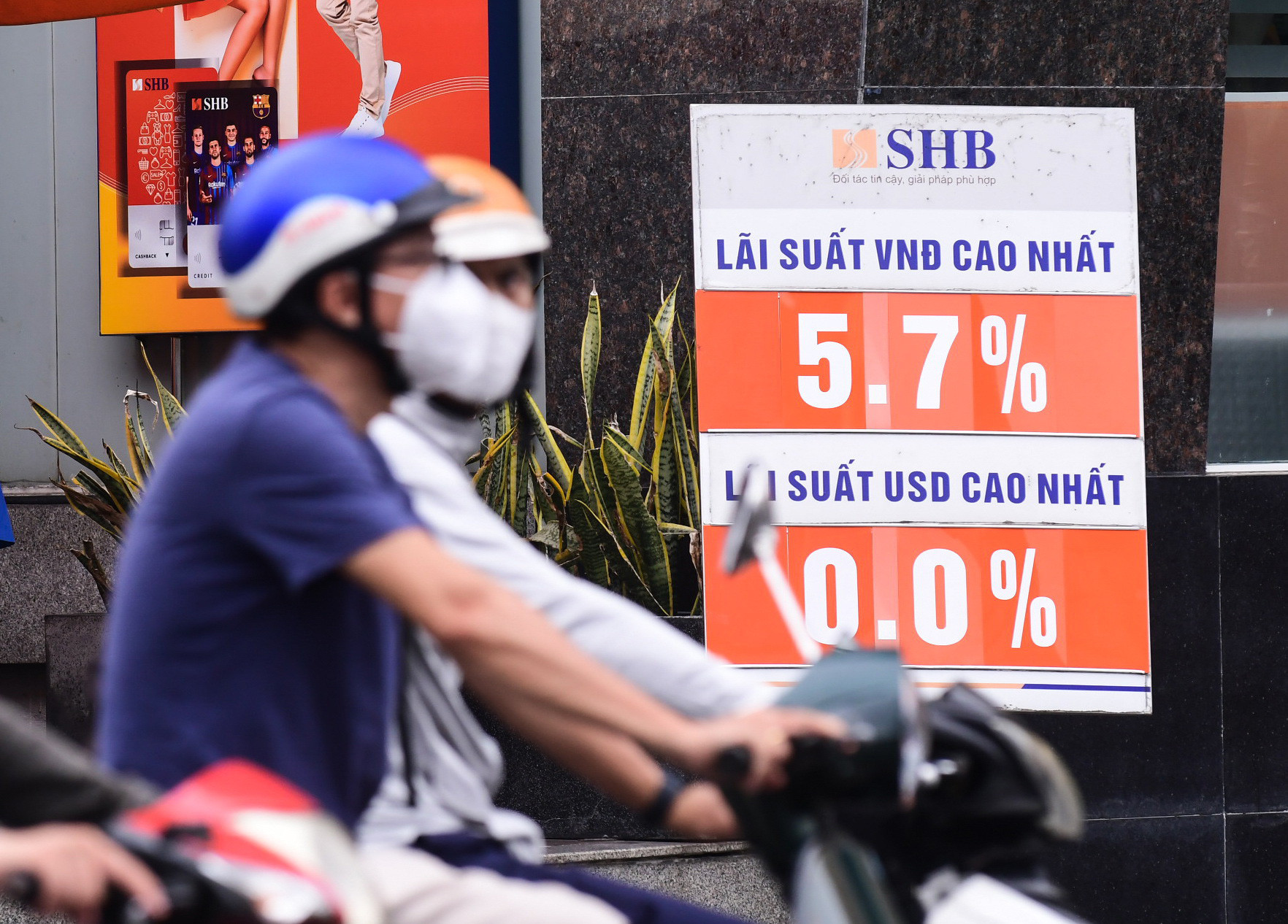Credit growth in the first two months of this year decreased by 1.12% compared to the end of 2023. According to experts, publicizing lending interest rates to help make the market transparent is one of the solutions to increase credit growth in the following months.

In Official Dispatch No. 18 on credit growth management in 2024, the Prime Minister requested public announcement of average lending interest rates so that people and businesses can easily access credit and choose banks to borrow capital.
Borrowers really want banks to publicly disclose specific loan interest rates, not only the base interest rate but also the fees when borrowing capital as well as penalties for early repayment...
Ms. Kim Chi (Ho Chi Minh City) said that she borrowed capital from a joint stock bank. When the mobilization interest rate increased sharply in late 2022 and early 2023, every time the interest rate was adjusted, she had a heart attack because the lending interest rate increased very quickly.
However, on the contrary, when the mobilization interest rate plummeted, only half, even one third compared to the same period last year, the lending interest rate decreased very slowly, not proportionally. When she questioned, the credit officer gave many reasons such as the old mobilization amount was still available so the cost price was still high or the lending interest rate was based on the agreement between the bank and the borrower and depending on the risk appetite...
"I support the specific disclosure of loan interest rates so that borrowers have a basis for comparison and selection," Ms. Kim Chi suggested.
Meanwhile, Mr. Duy Khanh (Go Vap) said that only publicizing the loan interest rate is not enough because in addition to the interest rate, borrowers have to bear a series of fees such as credit granting fee, appraisal fee, disbursement fee, notary fee..., at some points they are also forced to buy insurance. Not to mention that if the loan is for production and business but the recipient's account is opened at another bank, they will be charged a disbursement fee of several hundred thousand dong outside the system.
"In fact, all these fees constitute the real interest rate that not all borrowers know. Therefore, I suggest that banks publicly announce both fees and interest rates to make the market transparent," said Mr. Duy Khanh.
According to experts, in the context of credit growth in the first two months of this year decreasing by 1.12% compared to the end of 2023, publicizing lending interest rates is one of the solutions to help businesses and borrowers feel secure in borrowing capital, thereby improving credit growth in the following months.
According to the reporter's records, currently on the websites of some banks have publicly announced "base lending interest rates". However, each bank announces it differently.
At Sacombank, the base loan interest rate for VND with a term of 1-3 months is 4.2%/year, with a term of 4-6 months is 5.6%/year, with a term of 10-12 months is 7.7%/year, and with a medium and long term is 8.5%/year.
ACB also announced that the base lending interest rate applicable to the entire system from October 2, 2023 is 8.7%/year. However, the bank also noted that this base interest rate is applied to loans with interest rates at the renewal period calculated according to the lending interest rate table at ACB. "Customers please contact the nearest branch/transaction office for specific advice," the bank noted.
Vietnam International Bank (VIB), instead of listing a common base interest rate, divides it into loan purposes and disbursement periods. For the same loan purpose, if disbursed in 2024, the base interest rate will be lower than disbursed in previous years.
For example, if a loan to buy real estate is disbursed in 2024, the base interest rate is 9%/year, but if disbursed from 2023, the interest rate is 10%/year, if disbursed from 2019-2022, the base interest rate is 11%/year, and if disbursed before 2019, the interest rate is 11.5%/year.
Similarly, for auto loans, if disbursed in 2024, the base interest rate is 10%/year, which is also the lowest, and if disbursed before 2019, the interest rate is 11.5%/year. For business loans under 12 months, if disbursed in 2024, the base interest rate is 8.5%/year, and if disbursed from 2023, the base interest rate is 8.8%/year.
However, according to records, not all banks announce base interest rates or if they do, this content is not on the homepage but customers have to search on internal pages, so not all customers can access it.
According to the reporter's records, the current mobilization interest rate has dropped to an unprecedented low. At Vietcombank, the current mobilization interest rate for 1 and 2 month terms is only 1.7%/year, 3 month terms is down to 2%/year, 6 month terms is down to 3%. The highest mobilization interest rate at Vietcombank is only 4.7%/year, applied to terms of 12 months or more.
VietinBank also lowered the 1-month deposit interest rate to 1.9%/year, the 3-month and 6-month deposit interest rates to 2.2%/year and 3.2%/year, respectively, and the 12-month deposit interest rate to 4.8%/year. The highest deposit interest rate at VietinBank is currently 5%/year.
At some joint stock banks, due to lack of output, the mobilization interest rate has also decreased to the same level as the interest rate at banks in the Big 4 group. If a year ago the actual mobilization interest rate was up to 10-12%/year, now the mobilization interest rate in some places is only 1/2, even 1/3 of last year, but the rate of reduction in lending interest rates is not commensurate.
According to a survey, banks in the Big4 group (Agribank, Vietcombank, VietinBank and BIDV) are applying interest rates for loans for production and business, consumer loans and home purchases ranging from 5.3-8.5%/year, depending on the term.
For the group of joint stock commercial banks, home loan interest rates range from 5-10.5%/year. Of which, the interest rate of 5-6%/year is only applied during a short preferential period. After the preferential period, the floating interest rate falls to around 8-13%/year.
In particular, old loans have very slow interest rate reductions, making borrowers exhausted due to economic difficulties, reduced income while having to bear high interest.
To remove credit bottlenecks, a conference chaired by the Prime Minister with the chairmen of the board of directors and general directors of commercial banks will be held in the middle of this month.
To prepare for the conference, the State Bank has just issued a document directing commercial banks to report information, credit data, interest rates, and assess the current situation and causes of low credit growth for each industry and field.

Mr. Pham Nhu Anh, General Director of MB, said that the announcement to individual customers is appropriate, but there are many concerns for corporate customers. Because the loan interest rate for corporate customers is also based on the collateral and business plan of each customer.
Mr. Nguyen Hung, General Director of TPBank, said that the mobilization interest rate has been transparent up to now. With lending activities, the lending interest rate is decided by many factors from customer size, customer service, customer benefits, risk nature, and whether there is collateral or not. It is unreasonable to give a general interest rate.
Therefore, banks will announce interest rates but according to each segment, product, type of risk and according to short or long term. "The announcement ensures transparency, and depending on the customer, there will be appropriate interest rates," Mr. Hung emphasized.
It is noted that recently, some banks have used tricks to anchor lending interest rates at high levels. For example, raising the 13-month term deposit interest rate to 2-3%/year higher than the general level, but the regulation only applies this interest rate to deposits from 200-500 billion VND.
In reality, very few people deposit such a large amount of money. The purpose of banks raising the 13-month term interest rate much higher than the general level is because this is the term that serves as the basis for adding the margin, from which the lending interest rate is determined when the preferential period ends. Therefore, raising the interest rate for this term is essentially for banks to anchor the lending interest rate.
Not to mention, there have been many cases of borrowing under preferential packages, after a few years of arranging to pay off the capital early, the bank fined from several tens to several hundreds of millions with the reason... the bank took back the preferential amount that the customer had received. This is something that many customers did not anticipate.